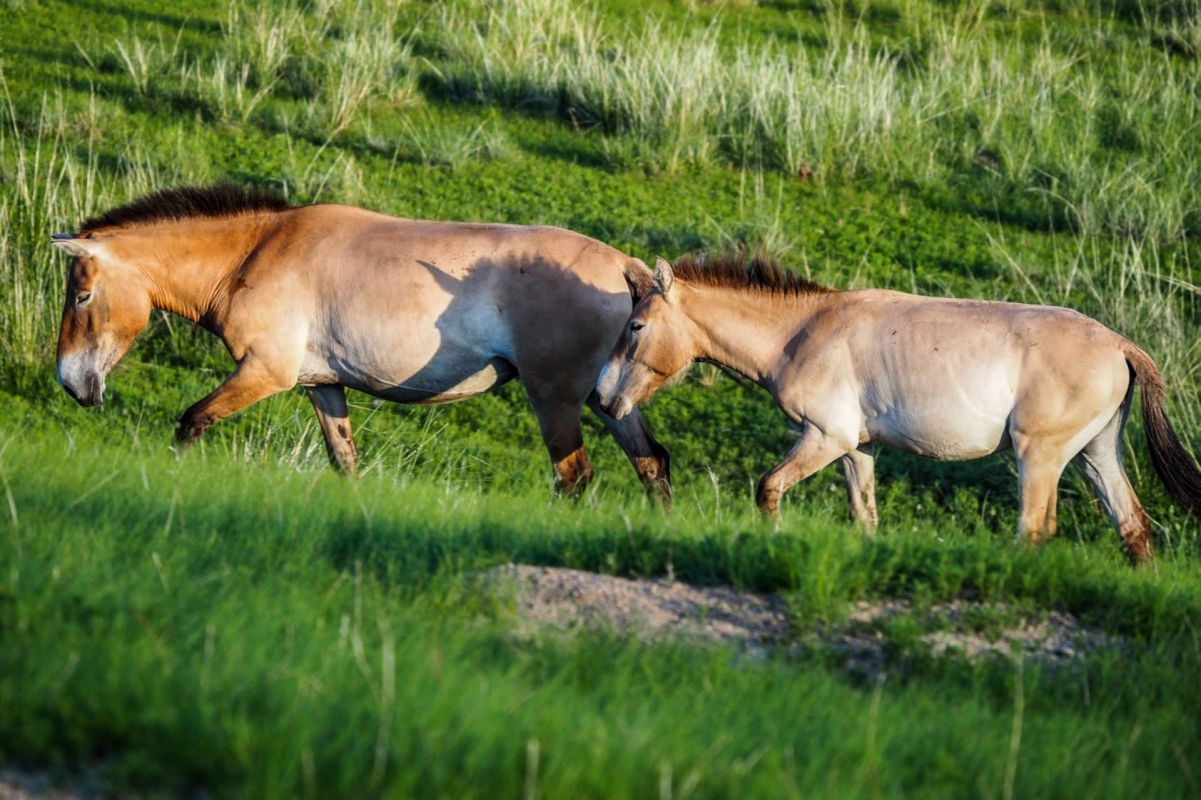Wild horses can't be broken, but they can be driven to extinction. Thankfully, with dedicated people fighting for them, they can also be brought back, which is precisely what happened in Mongolia with Przewalski's horse.
Known to Mongolians as takhi, they are the only equine breed never to be domesticated. The Guardian reports that while they were hunted to extinction in the 1960s, today, nearly 1,000 of the horses are spread over three sites in Mongolia, with more in China and Kazakhstan.
The journey was long and hard-fought, starting as far back as the early 1970s with gene-mapping of the last surviving animals in captivity to find the strongest and most genetically diverse horses.
Dashpurev Tserendeleg, who runs Hustai National Park, said the successful reintroduction and the horse's twice-downgraded risk status by the International Union for Conservation of Nature (IUCN) were "our biggest achievement."
"Horses are central to our culture. Everyone is glad to have them back," Tserendeleg said. "Before the reintroduction, nobody believed we could save this species."
The park has also seen rebounding populations of marmots, deer, and gazelles, but this success contrasts with the rest of the country. Conservationists hope the park can serve as a model for other areas.
"Mongolia's wildlife is in crisis," Tungaa Ulambayar, the local representative of the Zoological Society of London, told the Guardian. "It is in real danger of being wiped out."
Hunting for survival, booming cattle populations overgrazing vital grasslands, and the Earth's rising temperature are all contributing to the crisis. In response to the situation, the Mongolian government has launched initiatives to help with conservation — in 1998, it pledged to protect 30% of its territory by 2030, and last year, the president launched a drive to plant 1 billion trees by the same — but is struggling with a lack of funding.
Wildlife is crucial to thriving ecosystems, so efforts like these are incredibly important. Dorj Usukhjargal, Hustai's wildlife biologist, says that the principles of this project's success — long-term international partnerships, decades of scientific research, and rangers who collect data alongside evicting livestock — could easily transfer to other efforts, and they must.
"The Przewalski's horse reintroduction scheme is a worldwide example of how to save a large mammal," he said. "Every country can follow it."
Efforts are well underway globally to bring back other species like wild bison and the red wolf, among others.
Join our free newsletter for cool news and cool tips that make it easy to help yourself while helping the planet.









